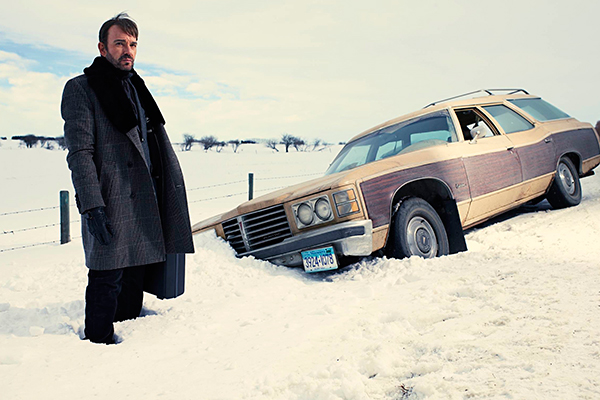Too much screens | Issue 16
Fargo
The A.V. Club’s Todd VanDerWerff wrote an article late in Breaking Bad>’s run about television and the clockwork universe. The idea is that some stories aim to present us with a complex array of moving parts, all of which serve a particular function within the story as a whole. Part of the thrill of watching Breaking Bad is the way things are set up early in the show’s run that pay off multiple seasons later. This kind of story is increasingly popular on television because it’s never really been possible to tell stories like this in a live-action visual medium before, but in the last decade and a half, largely thanks to the rise of cable, we have seen showrunners (that is, head writers, sometimes also directors) increasingly being treated as auteurs, a position previously reserved for film directors. And as television production has become more about realising one person’s vision, expectations have increased for television series to add up to one grand, coherent statement.
Fargo is interesting because it rejects the tidiness of the clockwork universe. Like the 1996 Coen Brothers film, from which the series is loosely adapted, the opening titles of each Fargo episode claim that what we’re seeing is based on a true story. Accordingly, what unfolds across the 10 episodes is the kind of roundabout, plausible-but-unbelievable chain of events you might read a Wikipedia article about 20 years after the fact. Mundane Minnesotan life is suddenly injected with an uncontainable chaos, and the result is explosive and bizarre. For some shows, every element contributes to the over-arching story, but Fargo takes place in a universe full of conflicting stories. Some are routine, some are odd, and some are horrible, and they often cut one another off midway through.
Clockwork universe shows have trained us to think that everything that happens which we don’t immediately understand the significance of is a mystery waiting to be solved. But narratives are just things we humans project onto sequences of events to help us make sense of them, and in a chaotic, unpredictable universe, the narratives we use to navigate everyday life are deceptively fragile. As such, Fargo rejects the clockwork universe style of storytelling in which every detail is meaningful in order to examine what we do when our personal narratives start to fall apart. Fargo’s characters make sense of their existences by telling themselves certain stories, and the show is interested in the ways these people behave when confronted with something that doesn’t fit into their world-view; some double down, some switch sides, and if they’re lucky, they manage to adapt, while holding onto their ideals.
Fargo subscribes to a kind of “urban legend logic,” in which regular people get caught up in strange, unfathomable things, in order to test its characters. We can never really know if the stories we tell ourselves are true, and we can’t know how much weight to give to the unknown, the unconscionable, and the unthinkable. But by rejecting the clockwork universe and observing how people grapple with those narrative interruptions, Fargo suggests we can learn something about them, and maybe about ourselves.



